4.11.2016
JCSAT-15 arrives in Kourou for its December Arianespace Ariane 5 launch from the Spaceport, to carry two SSL-built satellites
Payload preparations for the December dual-passenger flight of Arianespace’s heavy-lift Ariane 5 are moving into gear following JCSAT-15’s arrival at the Spaceport in French Guiana.

Enclosed in its protective shipping container, JCSAT-15 is unloaded following its delivery to Félix Eboué International Airport via cargo jetliner.
This Japanese spacecraft was delivered last week to Félix Eboué International Airport near French Guiana’s capital city of Cayenne, then transferred by road for processing inside the Spaceport’s S5 satellite preparation facility.
JCSAT-15 was produced by Space Systems Loral (SSL) using its SSL 1300 platform. Equipped with Ku-band transponders, the 10-kW-class satellite will be used by operator SKY Perfect JSAT Corp to help broadcast its multi-channel pay TV service SKY PerfecTV! across Japan, as well as provide data transfer communications and maritime/aviation applications for the Oceania and Indian Ocean regions.
A dual-payload Arianespace mission with SSL satellites
Both payloads on the Ariane 5 mission in December – designated Flight VA234 in Arianespace’s numbering system – will be SSL-built satellites. In addition to JCSAT-15, it will orbit Star One D1 for Brazil’s Embratel Star One.
Initiating the fourth generation “D” family of Embratel Star One satellites, Star One D1 is the largest ever built for the company, equipped with C-, Ku-, and Ka- band relay capacity. It will have a total mass at liftoff of 6,433 kg.
Flight VA234 with Star One D1 and JCSAT-15 will follow Arianespace’s upcoming mission with its heavy-lift launcher, which is to orbit the next four satellites for Europe’s Galileo navigation system on November 17; and the next lightweight Vega launch, scheduled for December 5 with Turkey’s GÖKTÜRK-1A observation satellite.
Quelle: arianespace
-
Update: 18.11.2016
.
Star One D1 arrives for Arianespace’s heavy-lift Ariane 5 flight in December with two SSL-built satellites

The protective container with Star One D1 emerges from the An-124 cargo jetliner during unloading activity at Félix Eboué International Airport near Cayenne.
Arianespace’s year-ending heavy-lift flight of 2016 from the Spaceport will orbit two passengers based on the SSL 1300 relay platform built by Space Systems Loral (SSL), with the second of these spacecraft now delivered to French Guiana.
The Star One D1 satellite arrived this week aboard a chartered An-124 cargo jetliner, which landed at Félix Eboué International Airport near French Guiana’s capital city of Cayenne. It now has begun the pre-launch preparation process at the Spaceport – joining JCSAT-15, which arrived in French Guiana late last month.
Star One D1 is the largest satellite ever built for Brazil’s Embratel Star One, and is to be positioned at 84° West for a planned operational lifetime of 15 years. It will complement the service provided by Embratel Star One’s Brasilsat B4 satellite – launched by Arianespace in 1994, extending operations in C Band, in addition to bringing new capacities in Ku-band for Latin America and Ka-band for Brazil.
Star One D1: the first D family satellite
With an estimated liftoff mass targeted at 6,433 kg., Star One D1 marks the beginning of Embratel Star One’s fourth-generation satellites, the D family.
Its C-band relay capacity will handle voice, TV, radio, and data – including Internet. The satellite’s Ku-band enables video transmission services directly to users, along with Internet, data and telephony to remote locations. Ka-band provides access to lower-cost broadband and high-speed data transmission for corporate networks and cellular backhaul.
The Ariane 5 mission with Star One D1 is designated Flight VA234 in Arianespace’s launch family numbering system, and its JCSAT-15 co-passenger was produced by SSL for Japan’s SKY Perfect JSAT Corporation. Operating in Ku-band, JCSAT-15 will be used to support the SKY PerfecTV! multichannel pay TV service in Japan, and also is to provide data transfer communications and maritime and aviation applications for the Oceania and Indian Ocean Region.
Quelle: arianespace
-
Update: 20.12.2016
.
Arianespace’s year-ending Ariane 5 launch is “go” for liftoff
The 11th Arianespace mission of 2016 has been given the go-ahead for its December 21 liftoff from the Spaceport in French Guiana, carrying the Star One D1 and JCSAT-15 satellites for deployment into geostationary transfer orbit.
This year-ending flight will mark the seventh of an Ariane 5 in 2016, and is the second time during the year that Arianespace will orbit two passengers built by U.S. spacecraft manufacturer Space Systems Loral (SSL) on the same heavy-lift Ariane 5 launcher.
The go-ahead for the mission was granted after the Launch Readiness Review, which validated the “go” status of the launch vehicle and its two payloads, along with the Spaceport’s infrastructure and the network of tracking stations.
A heavy-lift delivery for Ariane 5
Total payload lift performance for Wednesday’s early evening liftoff is approximately 10,720 kg., with the Star One D1 and JCSAT-15 satellites being deployed during a flight lasting just over 43 minutes. The mission is designated Flight VA234 in Arianespace’s launcher family numbering system, signifying the 234th with an Ariane family vehicle.
Positioned in Ariane 5’s upper passenger position, protected by the launcher’s ogive-shaped payload fairing is the Star One D1 relay platform for Brazil’s Embratel Star One. Once operational at its geostationary orbital position of 84 to 75 deg. West, Star One D1 will complement the service provided by Embratel Star One’s Brasilsat B4 satellite (launched by Arianespace in 1994), extending operations in C-Band and bringing new capacities in Ku-band for Latin America and Ka-band for Brazil.
JCSAT-15 is Flight VA234’s lower passenger, contained in Ariane 5’s SYLDA dispenser system. This spacecraft will be utilized by Japanese operator SKY Perfect JSAT Corp. to broadcast the multi-channel pay TV service SKY PerfecTV! across Japan, as well provide data transfer communications and maritime/aviation applications for the Oceania and Indian Ocean regions.
After reaching the orbital location of 110 deg. East longitude, JCSAT-15 will replace the N-SAT-110 satellite, launched by Arianespace in 2000.
.
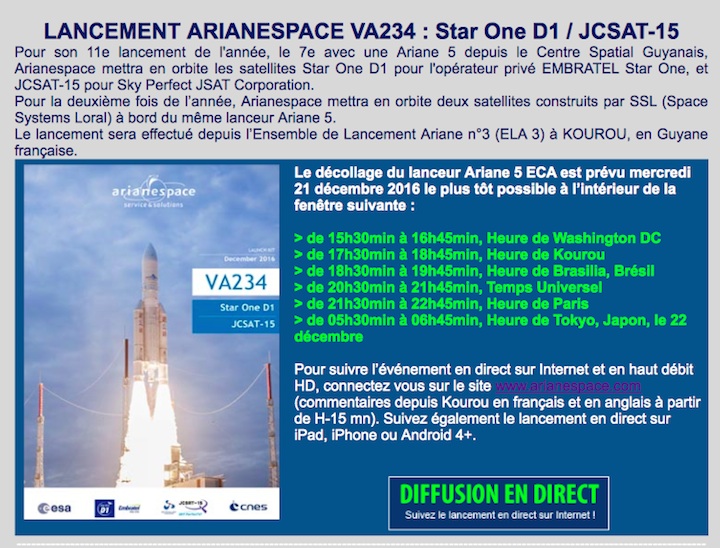
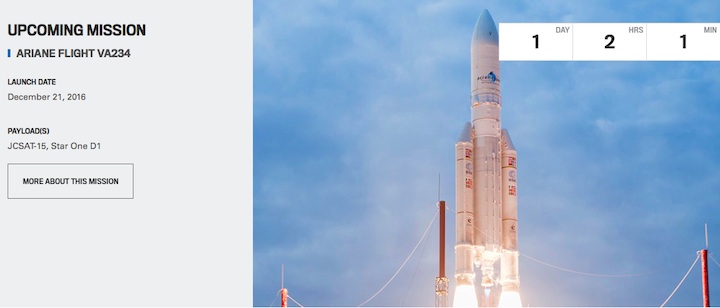
Quelle: arianespace
-
Update: 21.12.2016
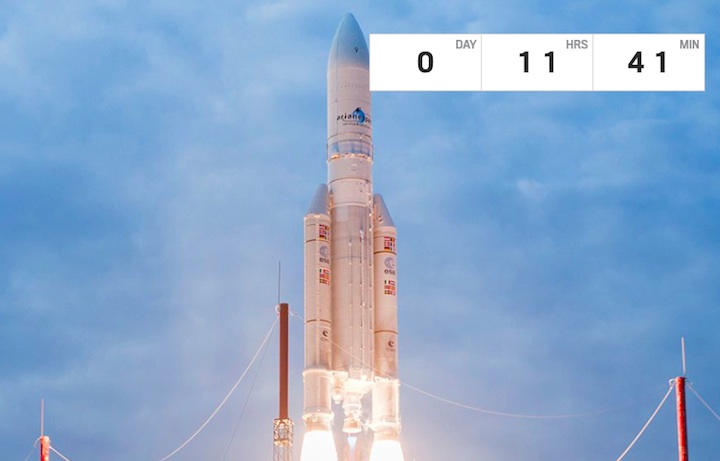
Quelle: arianespace
...
Update; 21.25 MEZ
Start-Frams von VA-234:
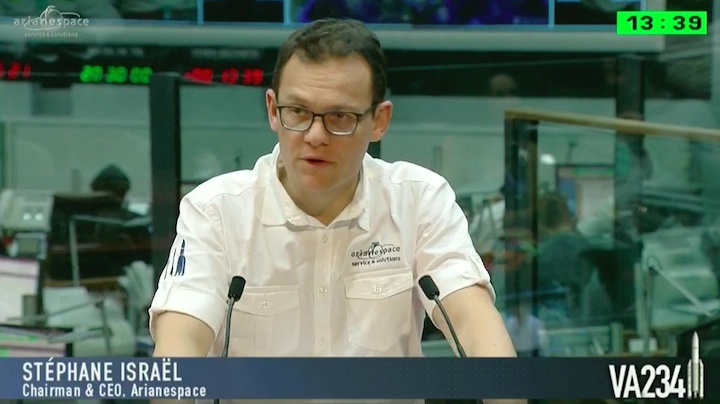
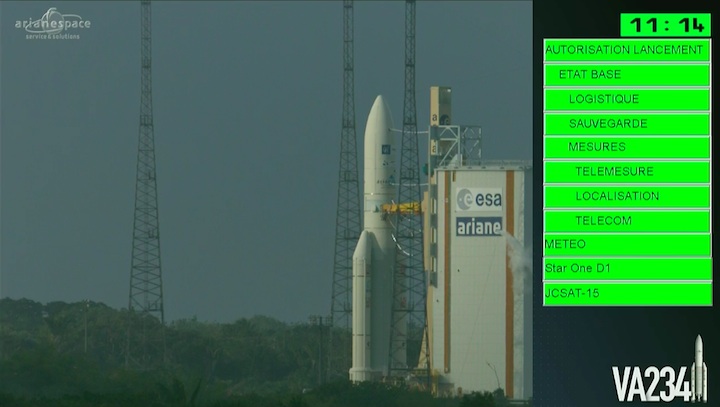
...
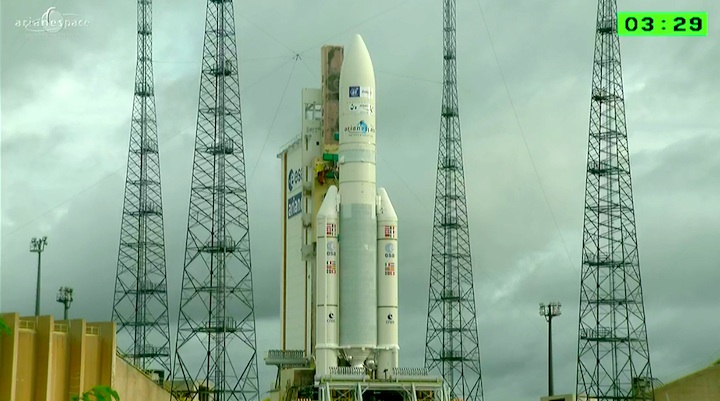
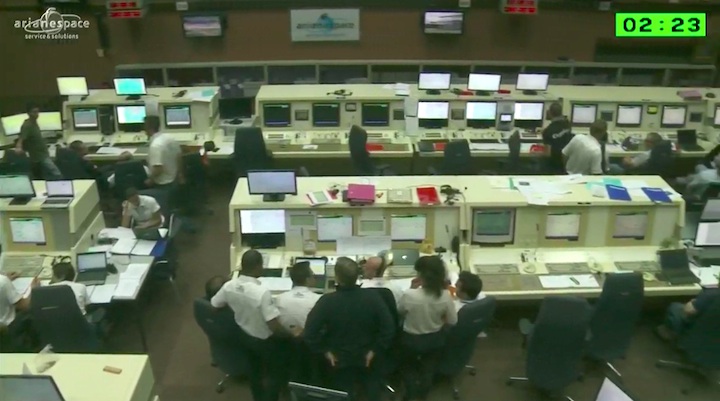
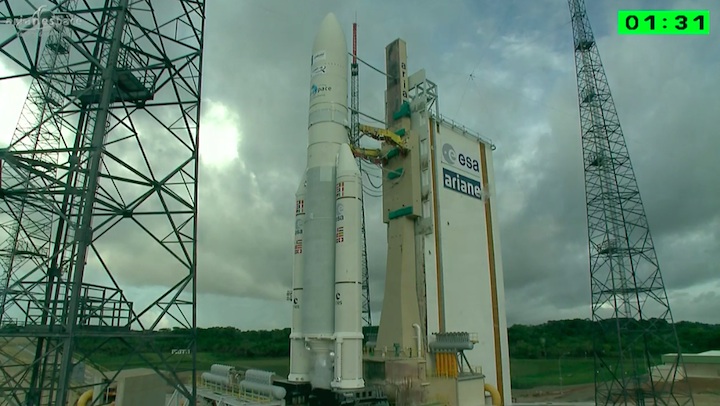
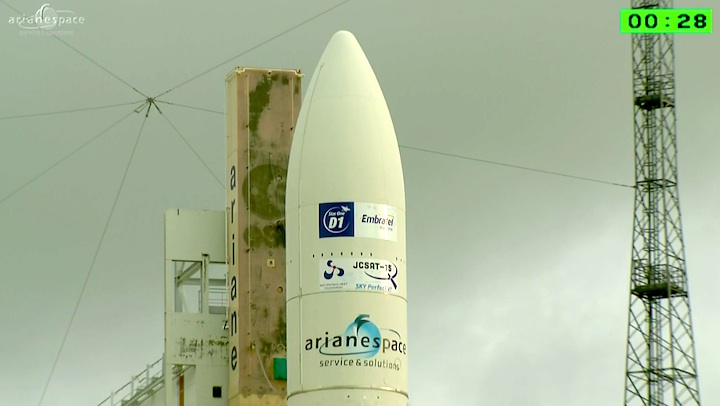
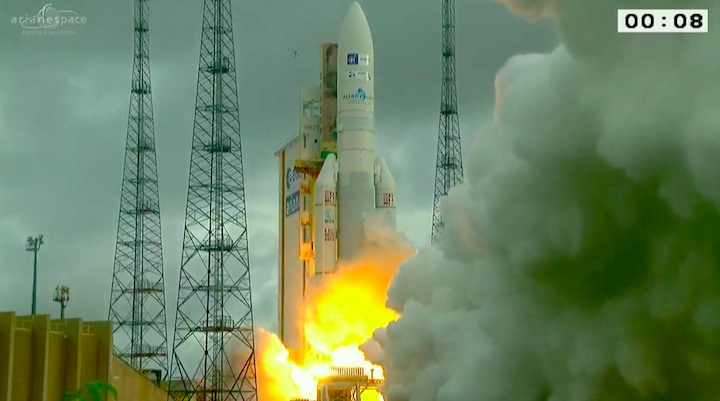
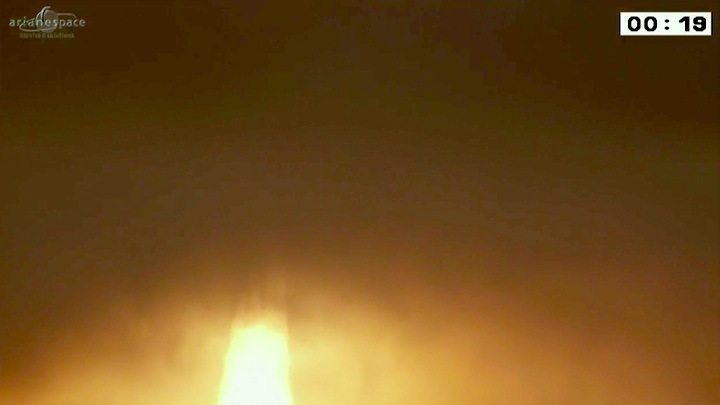
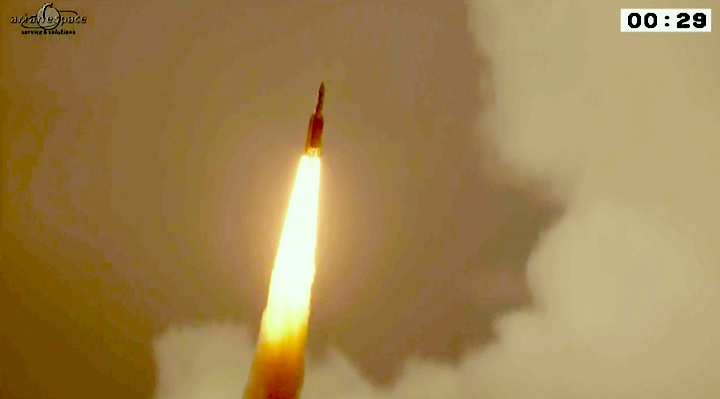
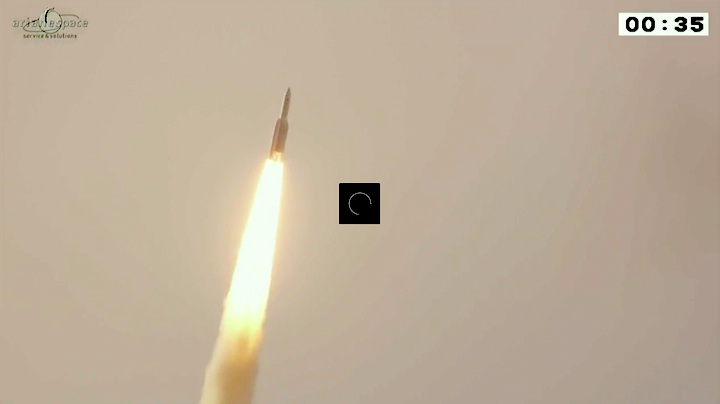
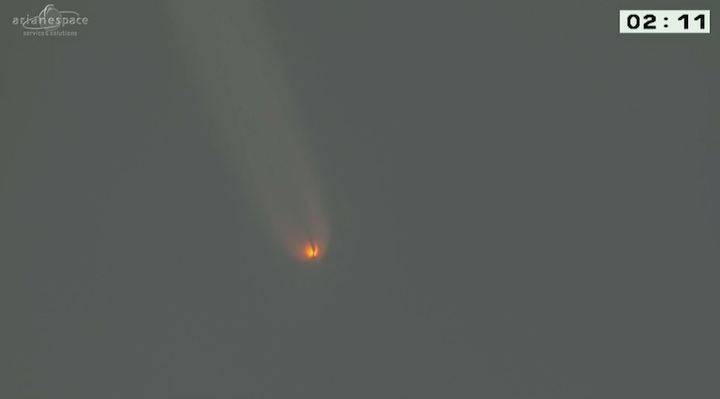
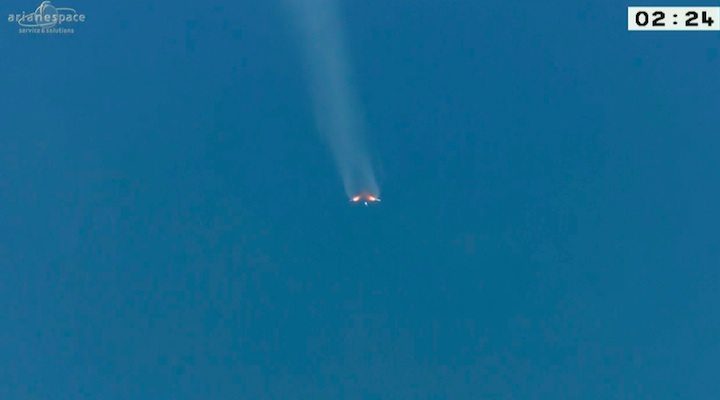
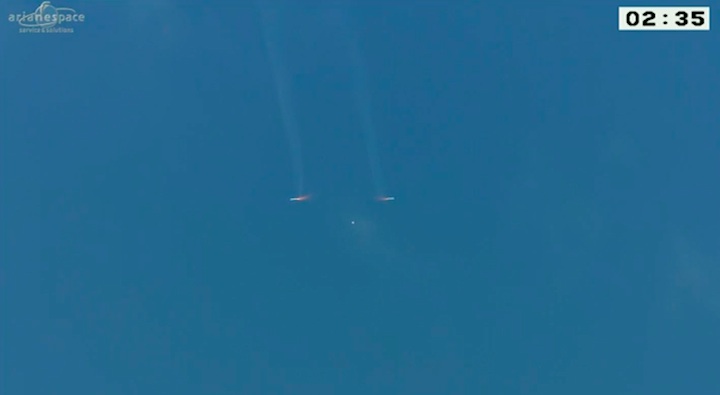
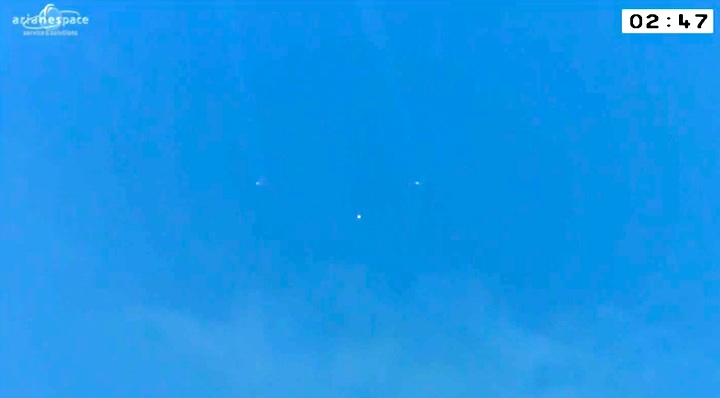
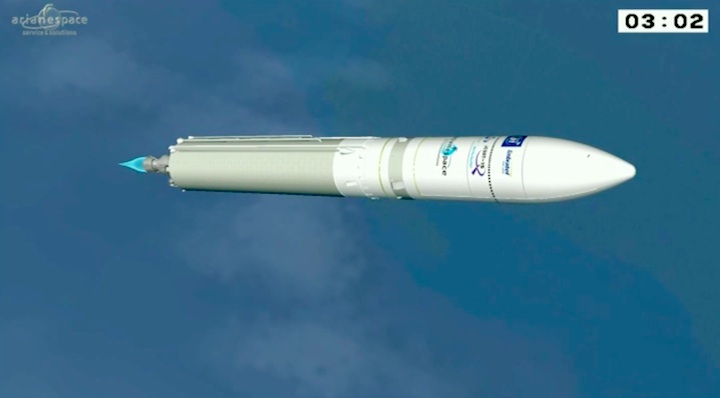
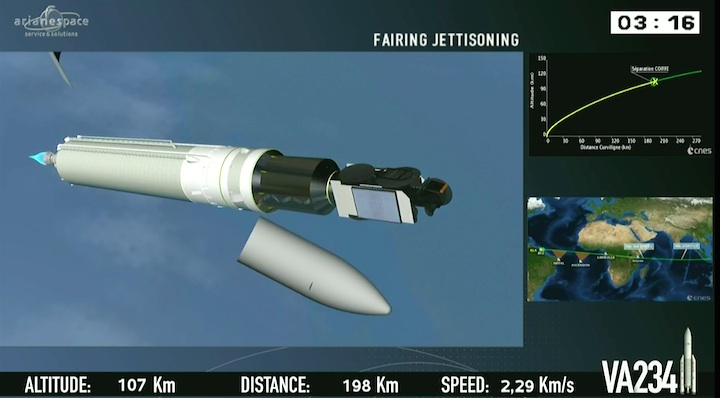

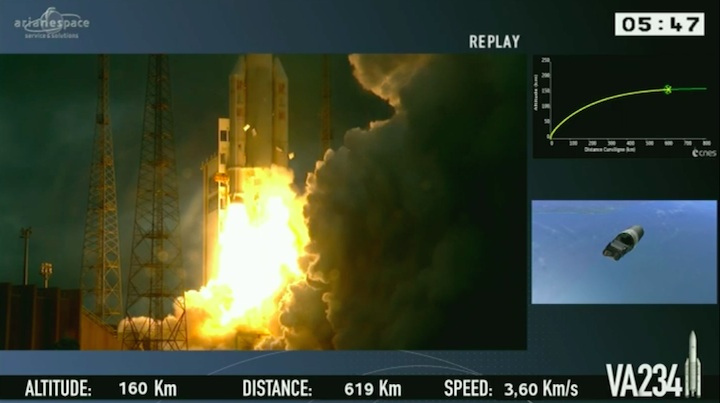
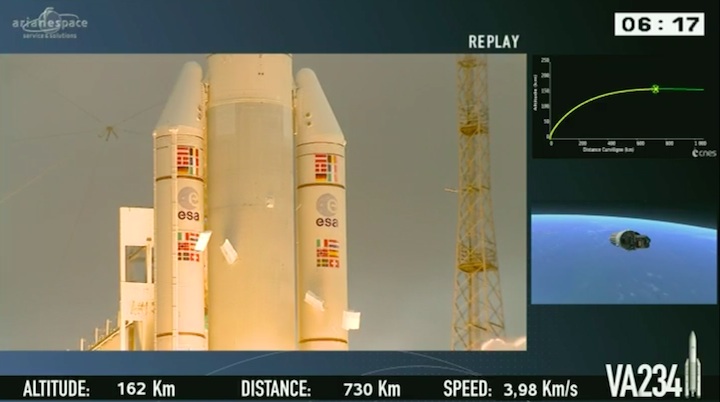
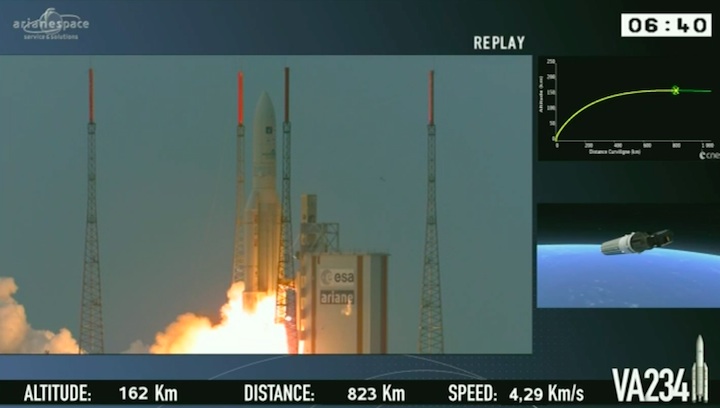
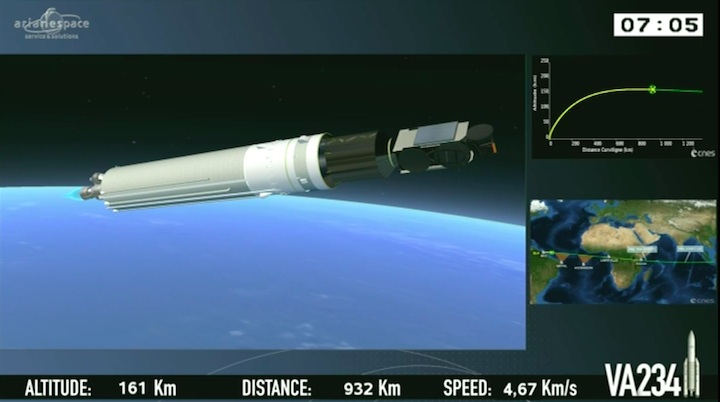
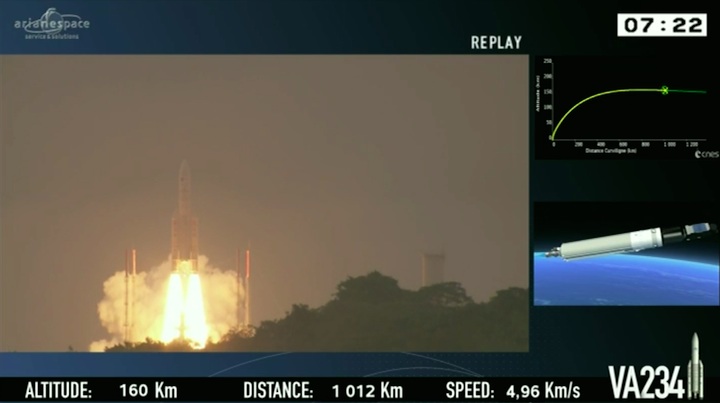
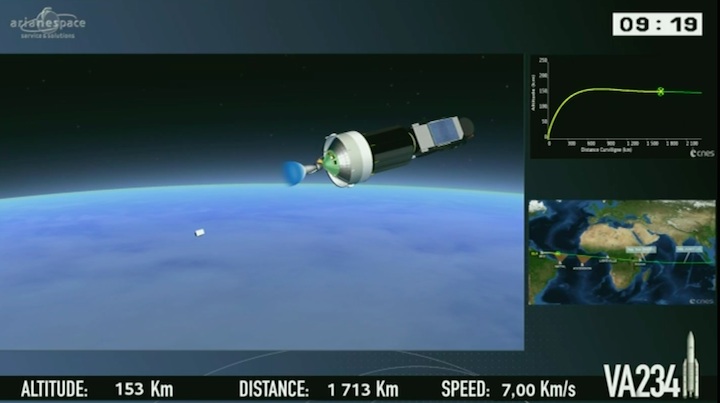
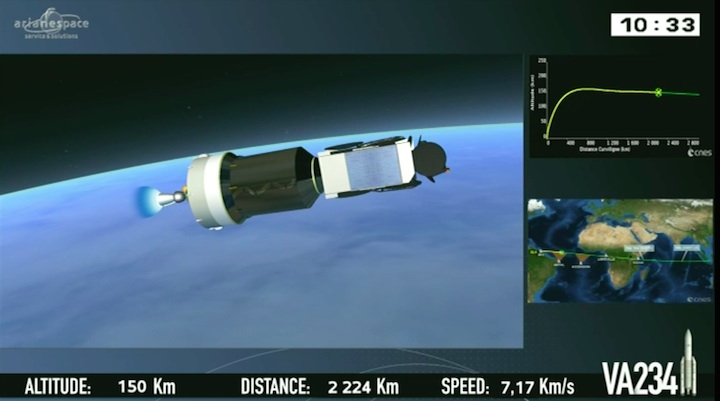
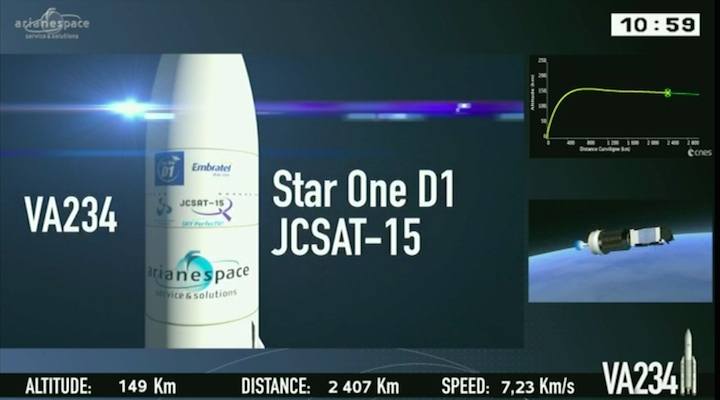
Quelle: arianespace
---
ARIANE 5’S SEVENTH LAUNCH THIS YEAR
An Ariane 5 lifted off this evening to deliver two telecom satellites, Star One-D1 and JCSat-15, into their planned orbits.
Arianespace announced liftoff at 20:30 GMT (17:30 local time, 21:30 CET) from Europe’s Spaceport in Kourou, French Guiana for a dual payload mission lasting about 43 minutes.
Star One-D1, with a mass of 6433 kg at liftoff, was the first satellite to be released, about 29 minutes into the mission. The 3400 kg JCSat-15 was released 14 minutes later.
Star One-D1, owned by Embratel Star One, will handle broadcasting, broadband, Internet access and other digital applications over Brazil, Latin America, Central America, Mexico and the Caribbean.
JCSat-15, owned by SKY Perfect JSat, will offer a range of communications services for Japan, including broadcasting, data transfer, and maritime and aeronautical applications for the Oceania and Indian Ocean regions.
Both satellites are designed to last more than 15 years.
The payload mass for this launch was 10 722 kg. The satellites totalled about 9833 kg, with payload adapters and carrying structures making up the rest.
Flight VA234 was the 90th Ariane 5 launch, and the seventh this year.
Quelle: ESA


